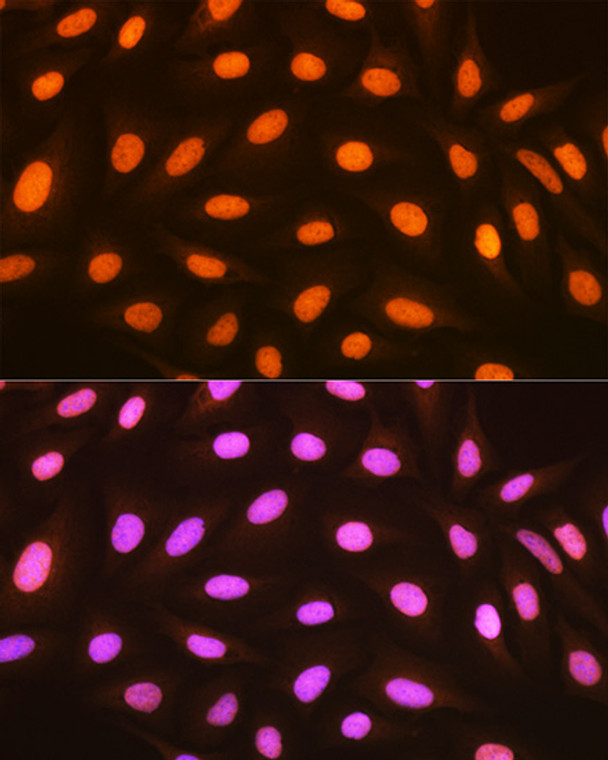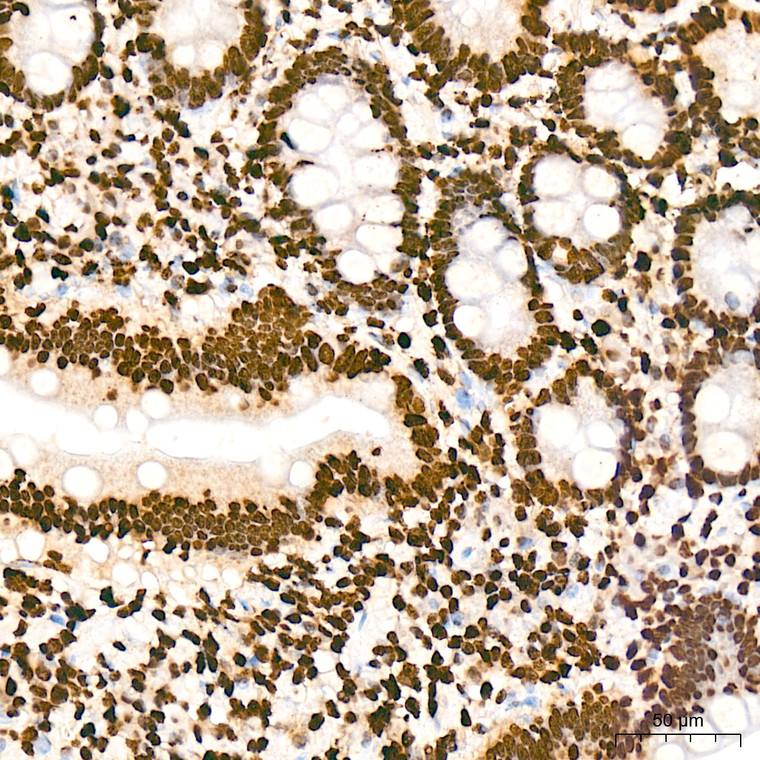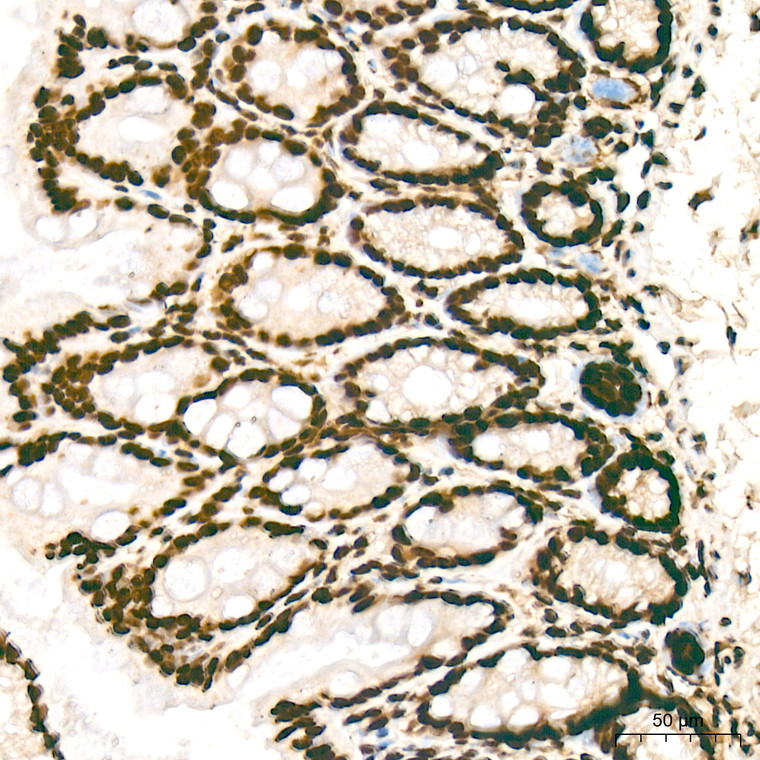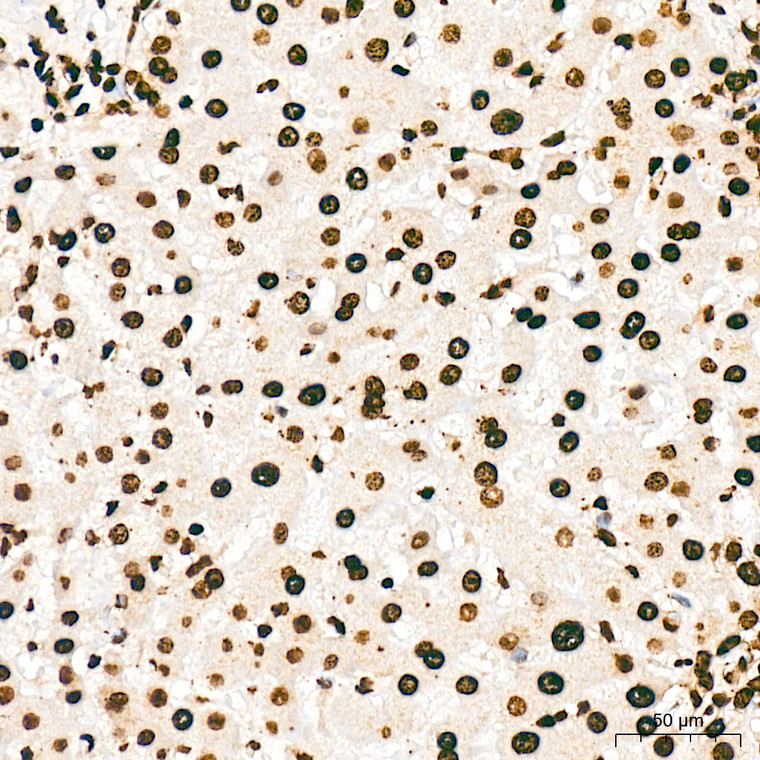| Host: |
Rabbit |
| Applications: |
WB/IHC/IF |
| Reactivity: |
Human/Mouse/Rat |
| Note: |
STRICTLY FOR FURTHER SCIENTIFIC RESEARCH USE ONLY (RUO). MUST NOT TO BE USED IN DIAGNOSTIC OR THERAPEUTIC APPLICATIONS. |
| Short Description: |
Rabbit monoclonal antibody anti-macroH2A.1 (200-300) is suitable for use in Western Blot, Immunohistochemistry and Immunofluorescence research applications. |
| Clonality: |
Monoclonal |
| Clone ID: |
S6MR |
| Conjugation: |
Unconjugated |
| Isotype: |
IgG |
| Formulation: |
PBS with 0.02% Sodium Azide, 0.05% BSA, 50% Glycerol, pH7.3. |
| Purification: |
Affinity purification |
| Dilution Range: |
WB 1:500-1:2000IHC-P 1:50-1:200IF/ICC 1:50-1:200 |
| Storage Instruction: |
Store at-20°C for up to 1 year from the date of receipt, and avoid repeat freeze-thaw cycles. |
| Gene Symbol: |
MACROH2A1 |
| Gene ID: |
9555 |
| Uniprot ID: |
H2AY_HUMAN |
| Immunogen Region: |
200-300 |
| Immunogen: |
A synthetic peptide corresponding to a sequence within amino acids 200-300 of human macroH2A.1 (O75367). |
| Immunogen Sequence: |
IHSEISNLAGFEVEAIINPT NADIDLKDDLGNTLEKKGGK EFVEAVLELRKKNGPLEVAG AAVSAGHGLPAKFVIHCNSP VWGADKCEELLEKTVKNCLA L |
| Tissue Specificity | Widely expressed. |
| Post Translational Modifications | Monoubiquitinated at either Lys-116 or Lys-117. May also be polyubiquitinated. Ubiquitination is mediated by the CUL3/SPOP E3 complex and does not promote proteasomal degradation. Instead, it is required for enrichment in inactive X chromosome chromatin. |
| Function | Variant histone H2A which replaces conventional H2A in a subset of nucleosomes where it represses transcription. Nucleosomes wrap and compact DNA into chromatin, limiting DNA accessibility to the cellular machineries which require DNA as a template. Histones thereby play a central role in transcription regulation, DNA repair, DNA replication and chromosomal stability. DNA accessibility is regulated via a complex set of post-translational modifications of histones, also called histone code, and nucleosome remodeling. Involved in stable X chromosome inactivation. Inhibits the binding of transcription factors, including NF-kappa-B, and interferes with the activity of remodeling SWI/SNF complexes. Inhibits histone acetylation by EP300 and recruits class I HDACs, which induces a hypoacetylated state of chromatin. Isoform 1: Isoform that specifically binds poly-ADP-ribose and O-acetyl-ADP-ribose and plays a key role in NAD(+) metabolism. Able to bind to the ends of poly-ADP-ribose chains created by PARP1 and cap them. This prevents PARP1 from further addition of ADP-ribose and thus limits the consumption of nuclear NAD(+), allowing the cell to maintain proper NAD(+) levels in both the nucleus and the mitochondria to promote proper mitochondrial respiration. Increases the expression of genes involved in redox metabolism, including SOD3. Isoform 2: In contrast to isoform 1, does not bind poly-ADP-ribose. Represses SOD3 gene expression. |
| Protein Name | Core Histone Macro-H2a.1Histone Macroh2a1Mh2a1Histone H2a.yH2a/YMedulloblastoma Antigen Mu-Mb-50.205 |
| Cellular Localisation | NucleusChromosomeEnriched In Inactive X Chromosome Chromatin And In Senescence-Associated HeterochromatinRecruited To Dna Damage Sites In An Aplf-Dependent Manner |
| Alternative Antibody Names | Anti-Core Histone Macro-H2a.1 antibodyAnti-Histone Macroh2a1 antibodyAnti-Mh2a1 antibodyAnti-Histone H2a.y antibodyAnti-H2a/Y antibodyAnti-Medulloblastoma Antigen Mu-Mb-50.205 antibodyAnti-MACROH2A1 antibodyAnti-H2AFY antibody |
Information sourced from Uniprot.org
12 months for antibodies. 6 months for ELISA Kits. Please see website T&Cs for further guidance





















